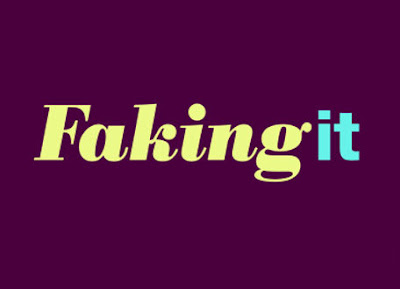Logo tv. - old logo ran til 2012
Logo TV is an American digital cable and satellite television channel that is owned by Viacom Media Networks. From its launch up to February 21, 2012, the channel focused on lifestyle programming aimed primarily at LGBT people.
Logo. Rebrand
Much of the film and TV branding aimed predominantly at LGBT audiences is remarkably simple and un-symbolic of the specific target audience itself. The generically legible, functional sans serif typefaces used doesn't show contrast to that of its homosexual counterparts. This indifference could be due to broadcasting of such shows becoming more integrated within popular culture rather than underground.
Certain isolated examples of shows aimed at an LGBT audience embody examples of visual components considered to be iconically homosexual.
The branding for the (2014) film GBF (stands for Gay Best Friend) is an example of typically gay characteristics and visual semiotics in use. Iconic gay male characteristics represented in the media include; glamour, flamboyance and androgyny. The use of glittery, bold type is a visual personification and adoption of commodity fetishism within design for a queer audience. Commodity fetishism is a topic that applies to the representation of the gay male persona evidently. Contemporary colour theory associates pink with femininity; GBF's use of pink is a reflection of the feminine and flamboyant attributes of queer males. The film itself is directed by Darren Stein who is openly gay, this information suggests the film is a proud representation of gay expression. The idea of being camp and feminine due to homosexuality is something the queer community has claimed as an empowering trait; “To have a good camp together gives you a tremendous sense of identification and belonging” (Dyer.R, p49).
In contrast to the idea of homosexuals claiming the characteristics historically used as insults towards them; the marginalised representation of gay men could damage the opinions of society and the young community.
http://www.crwflags.com/fotw/flags/qq-rb.html - source for flags
Iconography is used throughout some LGBT aimed advertising to directly specify audience. The most prevalent example of such being the rainbow flag which is a representation of gay pride (but the colours also represent; light, healing, sun, calmness, art and the spirit). A less frequently seen symbol is the pink triangle which is representative of gay liberation; iconically seen on flags at activist marches. The iconography of the pink triangle originates from the Nazi camps when individuals were forced to wear the pink triangle as an identifier of homosexuality. In more contemporary uses of the symbol its used on flags at activism protests, as an attempt to turn the stigma into a mark of pride and change.
http://www.crwflags.com/fotw/flags/qq-het.html - heterosexual and anti gay flags
Discuss magazines with an LGBT audience - over sexualised? - 'As soon as I reveal my sexuality I become sexualised'. - sex isnt something that becomes a conversational topic with accuantainces until sexuality becomes a topic.
expand?


















No comments:
Post a Comment